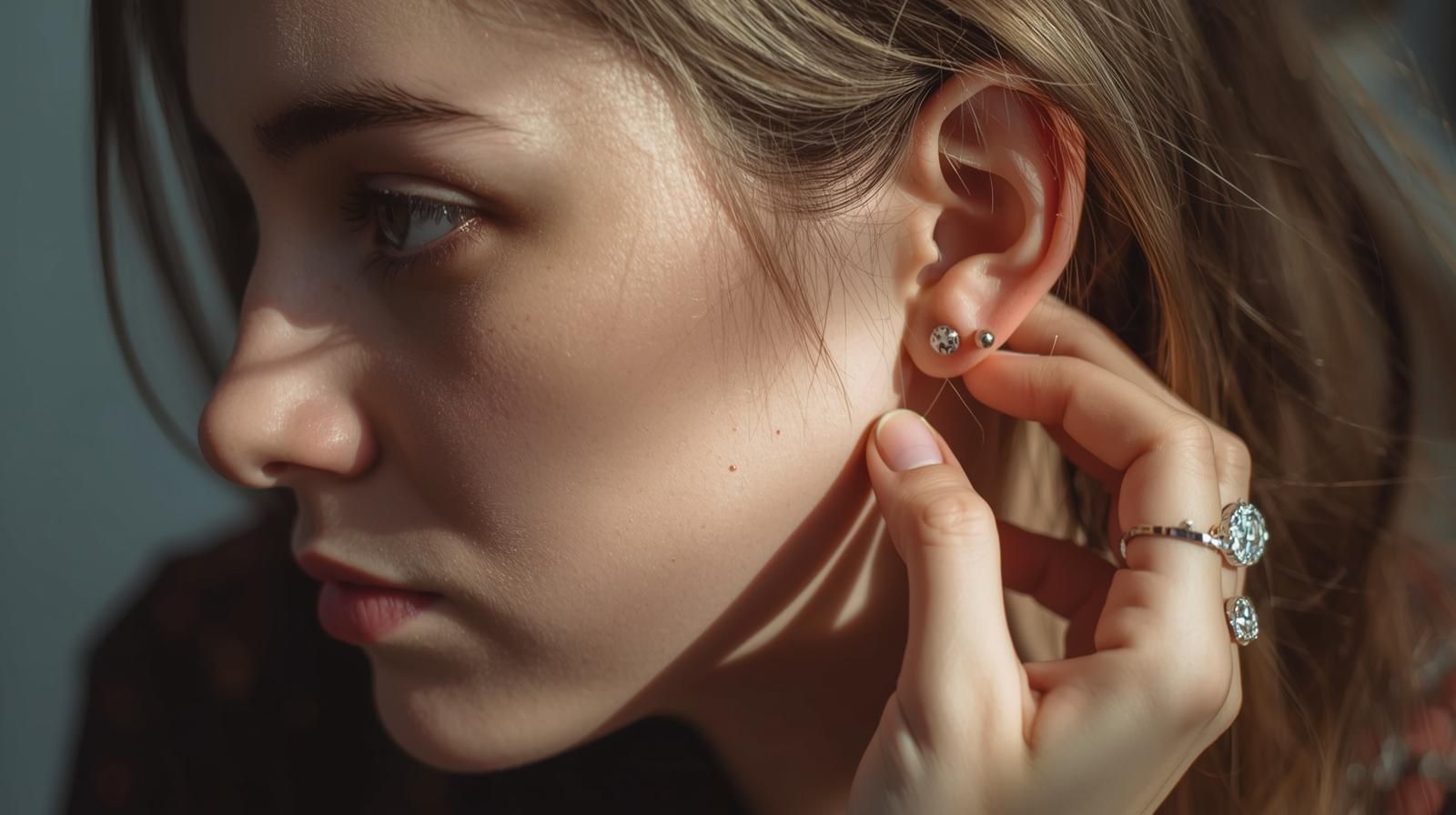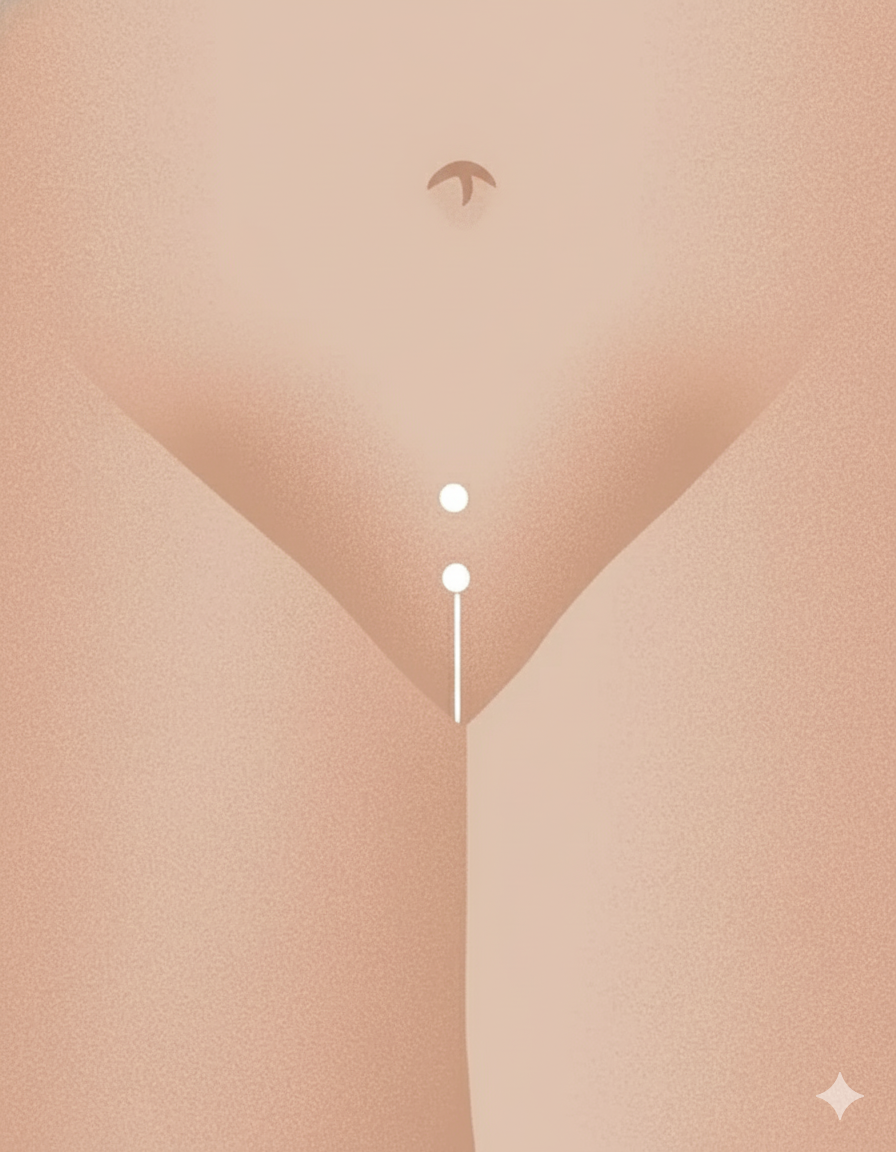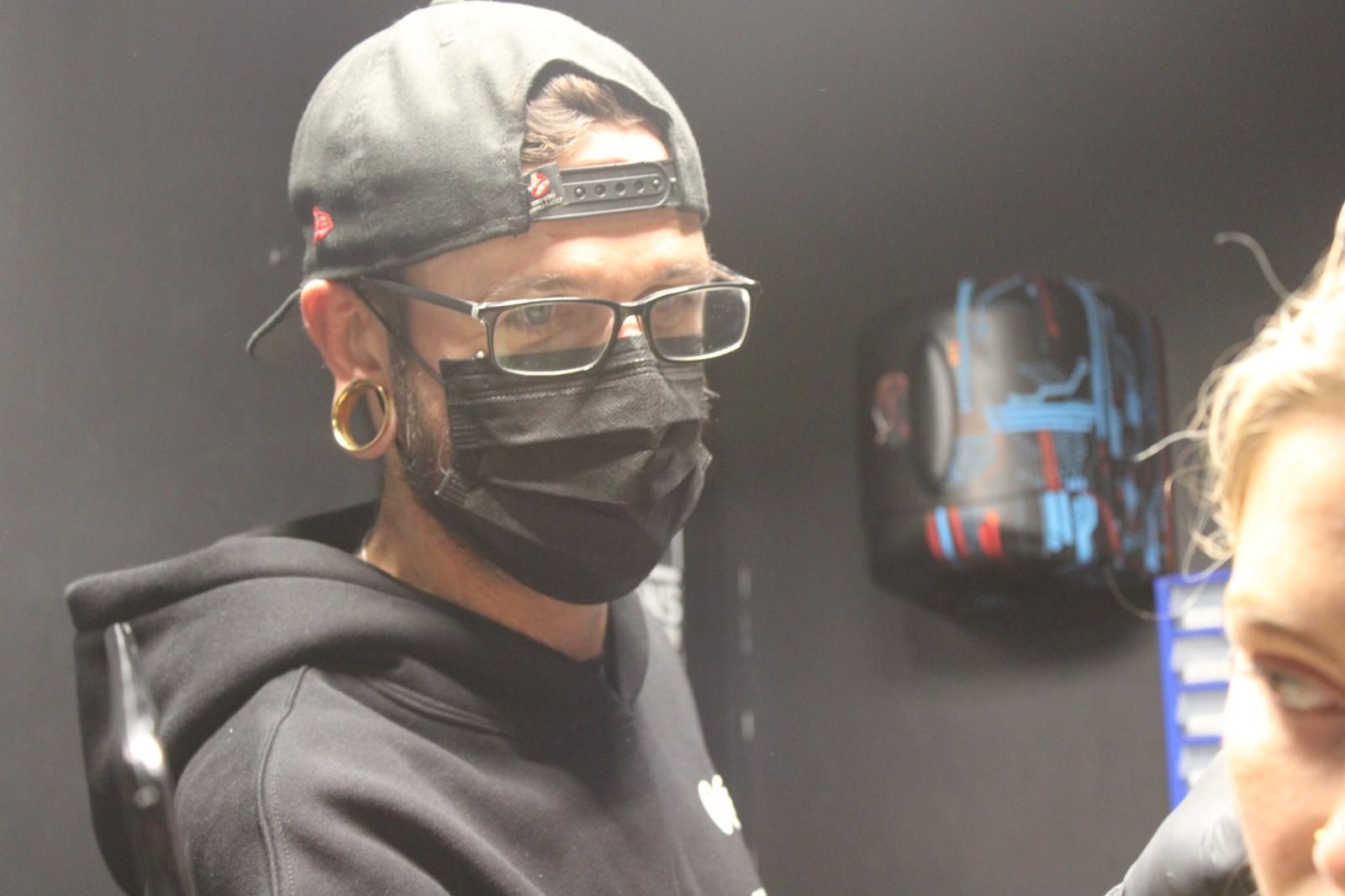When Can Babies Get Ears Pierced?
Table of Contents
- Introduction
- Understanding the Right Age for Ear Piercing
- Importance of Consent
- Risks and Precautions
- Professional Piercing Standards
- Healing Process: What to Expect
- Treating an Infected Ear Piercing
- FAQs
- Conclusion
Introduction
Deciding when to pierce a child's ears is a significant decision for many parents. While cultural traditions and personal preferences play a vital role, there are important considerations regarding the child's health and consent. This blog post aims to provide comprehensive information and practical advice for parents contemplating ear piercing for their children. This decision is often influenced by a variety of factors, including medical guidance, cultural practices, and individual family values. It is essential to weigh these factors carefully to ensure the best outcome for the child's well-being. Moreover, understanding the implications of ear piercing from a health perspective can empower parents to make informed choices that prioritise the child's safety and comfort.
Understanding the Right Age for Ear Piercing
Age Considerations
There is no universally agreed-upon age for ear piercing; however, any reputal professional piercer in Ireland would recommend waiting until the child is old enough to understand the process. This typically means waiting until they can provide informed consent, usually around the age of six or older. At this age, children can comprehend the procedure and express their willingness to undergo it.
For instance, the American Academy of Pediatrics (AAP) suggests that if parents choose to have their child's ears pierced, it is generally safer to wait until the child is old enough to care for the pierced site themselves. The AAP also advises that piercings in young children should be performed by professionals who use sterile techniques. In some cases, parents choose to wait until their children reach adolescence, as older children and teenagers are usually more capable of understanding the implications and responsibilities of having a piercing.
Additionally, age considerations should also take into account the child's ability to follow aftercare requirements. The healing process requires diligent care, and older children may be more adept at maintaining the necessary hygiene standards. Furthermore, by waiting until a child is older, parents can involve them in the decision-making process, fostering a sense of responsibility and ownership over their own body.
Cultural and Personal Influences
In some cultures, ear piercing is performed at a very young age as part of traditional practices. For example, in Indian culture, ear piercing is often done during an infant's first or second year as a part of religious ceremonies. Similarly, in Latin American communities, it is common to pierce a baby's ears shortly after birth. While respecting cultural norms, it is essential to balance tradition with modern health and safety standards. Parents should consider the child's ability to understand and consent before proceeding, ensuring that cultural practices align with the child's health needs. Engaging with community leaders or healthcare professionals who respect cultural traditions can support parents in making informed decisions.
Cultural practices can provide a sense of identity and belonging, and when combined with a careful consideration of health and safety, they can enrich the child's experience. It is important for parents to have open discussions with family members and healthcare providers to ensure that cultural practices are observed in a manner that supports the child's overall well-being. This collaborative approach can help bridge tradition with modern health practices, resulting in a decision that honours both cultural heritage and the child's health. In any case, no professional piercer will pierce a childs ear unless the child is old enough to understand and consent.
Importance of Consent
Child's Understanding
Informed consent is a cornerstone of ethical piercing practices. A child must understand that piercing involves inserting a needle through the earlobe, which may cause discomfort. They should be able to articulate their desire for the piercing and demonstrate readiness for the experience. This involves having a conversation with the child about the procedure, potential pain, and aftercare responsibilities. Parents can facilitate understanding by explaining the steps involved and what to expect during the piercing process. Encouraging children to ask questions can help them feel more in control and prepared.
Furthermore, discussing the long-term aspects of having a piercing, such as the need for ongoing care and the potential for closure if the earrings are removed, can help children make a more informed decision. This dialogue not only empowers the child but also fosters a sense of autonomy and respect for their body. By ensuring that the child is fully informed and enthusiastic about the decision, parents can help create a positive and memorable experience.
Professional Standards
Credible professional piercers adhere to strict ethical standards and will not pierce a child's ears without clear consent from the child. This practice ensures the child is comfortable and psychologically prepared for the procedure. Professional studios often have policies in place to ensure that the child understands the process and is willing to proceed. For example, a reputable studio might conduct a brief consultation with both the parents and the child to discuss the process, address any concerns, and ensure everyone is informed about the hygiene standards and aftercare requirements. Such practices not only safeguard the child's physical health but also promote an ethical approach to body modification.
Moreover, professional standards extend beyond the initial piercing to include aftercare support. Many studios offer follow-up consultations to ensure the healing process is progressing well and to address any concerns that may arise. This ongoing support underscores the commitment to the child's health and can provide reassurance to both the parents and the child throughout the healing process.
Risks and Precautions
Avoiding Piercing Guns
Piercing guns should never be used for ear piercings. They cause unnecessary trauma as they force the jewellery through the earlobe, leading to an increased risk of infection and poor healing. Additionally, piercing guns cannot be sterilised effectively, posing a further health risk. A case study from a public health investigation highlighted an increased incidence of infections linked to non-sterile piercing guns used in mall kiosks. This underscores the importance of choosing professional studios that use sterile techniques.
The trauma caused by piercing guns can result in complications such as keloids or other forms of scarring, particularly in individuals who are prone to such conditions. By opting for needle piercings, parents can mitigate these risks. Additionally, needle piercings allow for greater precision in placement, which can be particularly important for younger children whose ears are still growing and developing.
Professional Piercing Needles
Professional piercing studios, like Impulse BioWorks, use single-use, sterile piercing needles. These needles are designed to minimise trauma and are disposed of after each use, ensuring the highest level of hygiene and safety. In a study conducted by the Association of Professional Piercers, it was found that needle piercings have a significantly lower infection rate compared to those performed with piercing guns. The precision of needle piercings allows for more accurate placement and less tissue damage, contributing to quicker and healthier healing.
The use of sterile needles and other equipment is a critical component of reducing the risk of infection and ensuring a smooth healing process. Parents should inquire about the sterilisation practices at the studio and observe whether the piercer practices proper hygiene, such as wearing gloves and using antiseptic solutions. By ensuring that these standards are met, parents can significantly reduce the risk of complications and support a successful piercing experience.
Professional Piercing Standards
Choosing a Professional Studio
Select a reputable piercing studio that prioritises hygiene and professionalism. Ensure the studio uses sterile equipment and follows best practices for ear piercings. The studio should provide a clean, safe environment and employ experienced professionals. When evaluating a studio, parents can look for certifications or memberships in professional piercing organisations, which often require adherence to specific safety and hygiene standards. Testimonials and reviews from previous clients can also provide insights into the quality of service and client satisfaction.
Requesting a tour of the studio can also be beneficial to assess the cleanliness and professionalism of the environment. Parents should feel comfortable asking questions about the piercing process, the equipment used, and the qualifications of the piercers. A professional studio will be transparent about their practices and happy to address any concerns, ensuring that parents have confidence in their decision.
Hygiene Practices
Proper hygiene practices include the use of gloves, sterilised equipment, and a clean workspace. The piercer should explain the procedure to both the parents and the child, ensuring all parties are comfortable and informed. A professional piercer will typically show clients the sealed, sterile packaging of needles and other equipment before beginning the procedure. This transparency reassures parents and children about the safety of the process. Additionally, the studio should have clear protocols for cleaning and disinfecting the workspace between clients, further minimising the risk of contamination.
Studios should also provide detailed aftercare instructions to support the healing process. These instructions should be clear and easy to follow, with recommendations for products that can aid in healing. Some studios may offer aftercare kits that include saline solutions and other necessary items, providing added convenience for parents. By following these guidelines, parents can help ensure a smooth and successful healing process for their child.
Healing Process: What to Expect
Healing Timeframe
Ear piercings typically take 6 to 8 weeks to heal fully. During this period, it is crucial to follow aftercare instructions to prevent infection and ensure proper healing. The healing time can vary based on individual factors such as skin type, overall health, and adherence to aftercare guidelines. In some cases, healing may be slightly longer if the piercing becomes irritated or if the aftercare routine is not followed diligently.
It is essential for parents to monitor the piercing site regularly and seek professional advice if they observe any signs of infection or complications. Consistent aftercare is vital to promote healing and prevent issues such as scarring or prolonged discomfort. By staying informed and proactive, parents can help their child enjoy a positive piercing experience.
Aftercare Tips
- Clean the piercing site twice daily with a saline solution.
- Avoid touching the earrings with unclean hands.
- Rotate the earrings gently to prevent them from adhering to the skin.
- Avoid swimming in pools or natural bodies of water until the piercing has healed.
These aftercare steps are vital for preventing infection and promoting healing. Parents should supervise young children to ensure they do not fiddle with their earrings, which could introduce bacteria to the piercing site. Additionally, it is advisable to avoid using alcohol or hydrogen peroxide, as these can dry out the skin and delay healing.
Parents can also consider using hypoallergenic earrings made of materials such as surgical steel or titanium to reduce the risk of allergic reactions. These materials are less likely to cause irritation and can support a smoother healing process. By following these guidelines, parents can help ensure their child's piercing heals quickly and without complications.
How Long Do Ear Piercings Hurt?
Initial discomfort is common, but pain should subside within a few days. Persistent pain or swelling may indicate an infection and should be addressed by a professional. In some cases, mild discomfort may persist if the earrings are not the correct size or material for the child's skin. Hypoallergenic materials, such as surgical steel or titanium, are recommended to reduce the risk of allergic reactions and irritation.
Parents should monitor their child for any signs of discomfort or irritation and consult with a professional piercer or healthcare provider if concerns arise. By addressing these issues promptly, parents can help ensure their child's comfort and prevent potential complications.
How Long for Ear Piercing to Close?
If earrings are removed, ear piercings can begin to close within a few hours to several months, depending on how long the piercings have been in place. Fully healed piercings tend to take longer to close. For recent piercings, the holes can close rapidly, sometimes within hours. In contrast, piercings that have been in place for years may never fully close and can often accommodate earrings even after months without wearing them.
Parents should consider the child's readiness to maintain their piercings before deciding to remove earrings for extended periods. By understanding the closure process, parents can make informed decisions about when to allow their child to remove their earrings and how to maintain the piercings over time.
Treating an Infected Ear Piercing
Identifying Infection
Signs of infection include redness, swelling, pain, and discharge. If these symptoms occur, it is important to act promptly to prevent further complications. An infection can escalate quickly, so early detection and treatment are crucial. Parents should monitor the piercing site daily, especially in the first few weeks, to catch any signs of infection early.
In addition to these symptoms, a fever or increased tenderness around the piercing site may indicate a more serious infection that requires medical attention. Parents should not hesitate to seek professional advice if they are concerned about their child's health.
Treatment Steps
- Clean the Area: Use a saline solution to clean the infected area gently.
- Avoid Removing the Earring: Keeping the earring in place ensures the hole remains open for drainage.
- Consult a Professional: Seek advice from a professional piercer or healthcare provider if symptoms persist.
In severe cases, a healthcare provider may prescribe antibiotics to clear the infection. It is important to follow their instructions carefully and complete the full course of medication if prescribed. Parents should also avoid using topical ointments unless recommended by a healthcare professional, as these can sometimes trap bacteria inside the piercing.
By promptly addressing infections and following professional guidance, parents can help ensure their child's piercing heals properly and avoid further complications.
FAQs
How Long Do Ear Piercings Take to Heal?
Ear piercings typically heal within 6 to 8 weeks, provided aftercare instructions are followed diligently. Factors such as the child's age, skin type, and overall health can influence the healing time. Ensuring that the child maintains good hygiene and avoids irritating activities during the healing period can support faster recovery.
How to Treat an Infected Ear Piercing?
Clean the site with saline solution, avoid removing the earring, and consult a professional if the infection does not improve. In some cases, additional treatments such as warm compresses may be recommended to alleviate discomfort and promote drainage.
How Long Does a New Ear Piercing Take to Heal?
A new ear piercing usually heals in 6 to 8 weeks, depending on individual healing rates and adherence to aftercare guidelines. Some children may experience faster healing, while others may take a bit longer. Consistent aftercare and monitoring are key to a successful healing process.
How Long Does Ear Piercing Hurt?
Discomfort is usually limited to the first few days post-piercing. Persistent pain should be evaluated by a professional. If discomfort continues, it may indicate an issue with the jewellery or an underlying infection, both of which require professional assessment.
How Long for Ear Piercing to Close?
Earlobe piercings can close quickly if earrings are removed, especially if they are recent. Fully healed piercings may take longer to close. The speed at which a piercing closes can also depend on factors such as earlobe thickness and the type of jewellery worn.
Conclusion
Deciding to pierce a child's ears involves careful consideration of their readiness and understanding. Prioritising the child's comfort and safety is paramount. By choosing a professional studio and adhering to best practices, parents can ensure a positive piercing experience. Remember, informed consent is crucial, and professional standards must always be maintained to safeguard the child's health and well-being. Parents should also remain open to discussing their decisions with their children, ensuring that the experience is both physically and emotionally positive. As more information becomes available, staying informed about the latest safety guidelines and piercing techniques will help parents make the best decisions for their children. Through thoughtful planning and collaboration with professionals, parents can provide their children with a safe and rewarding experience that respects both cultural traditions and modern health standards.









